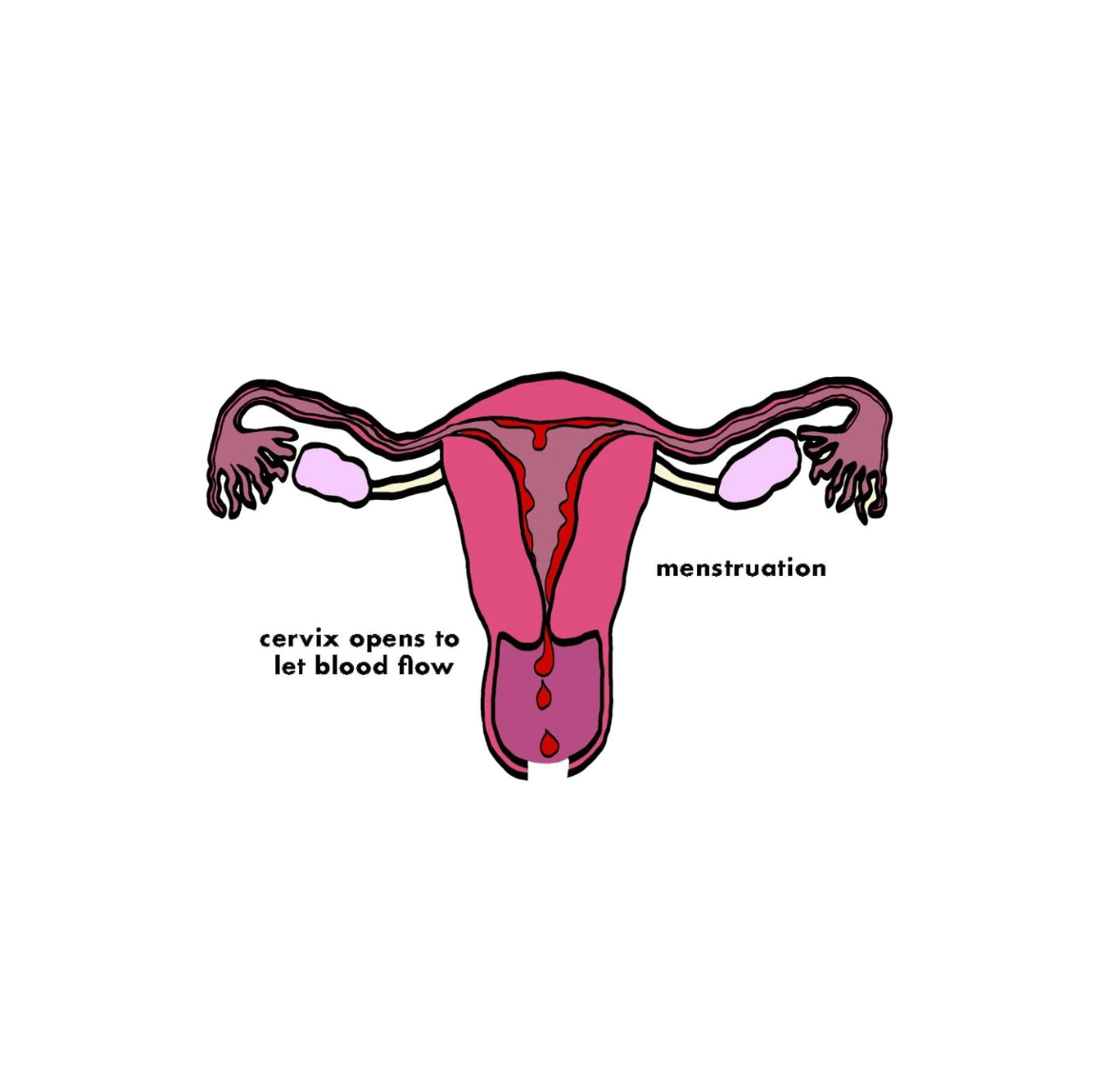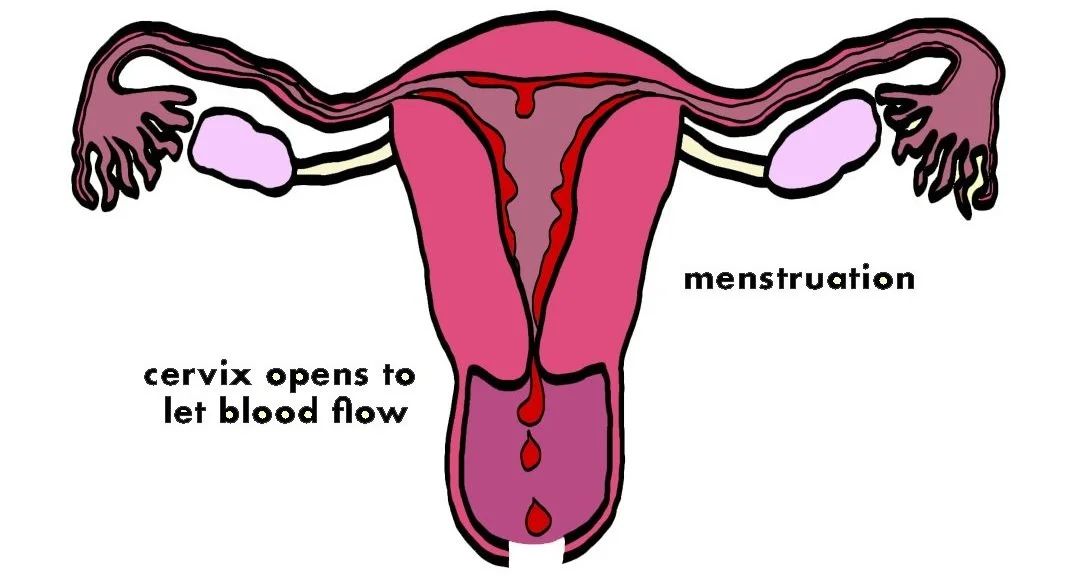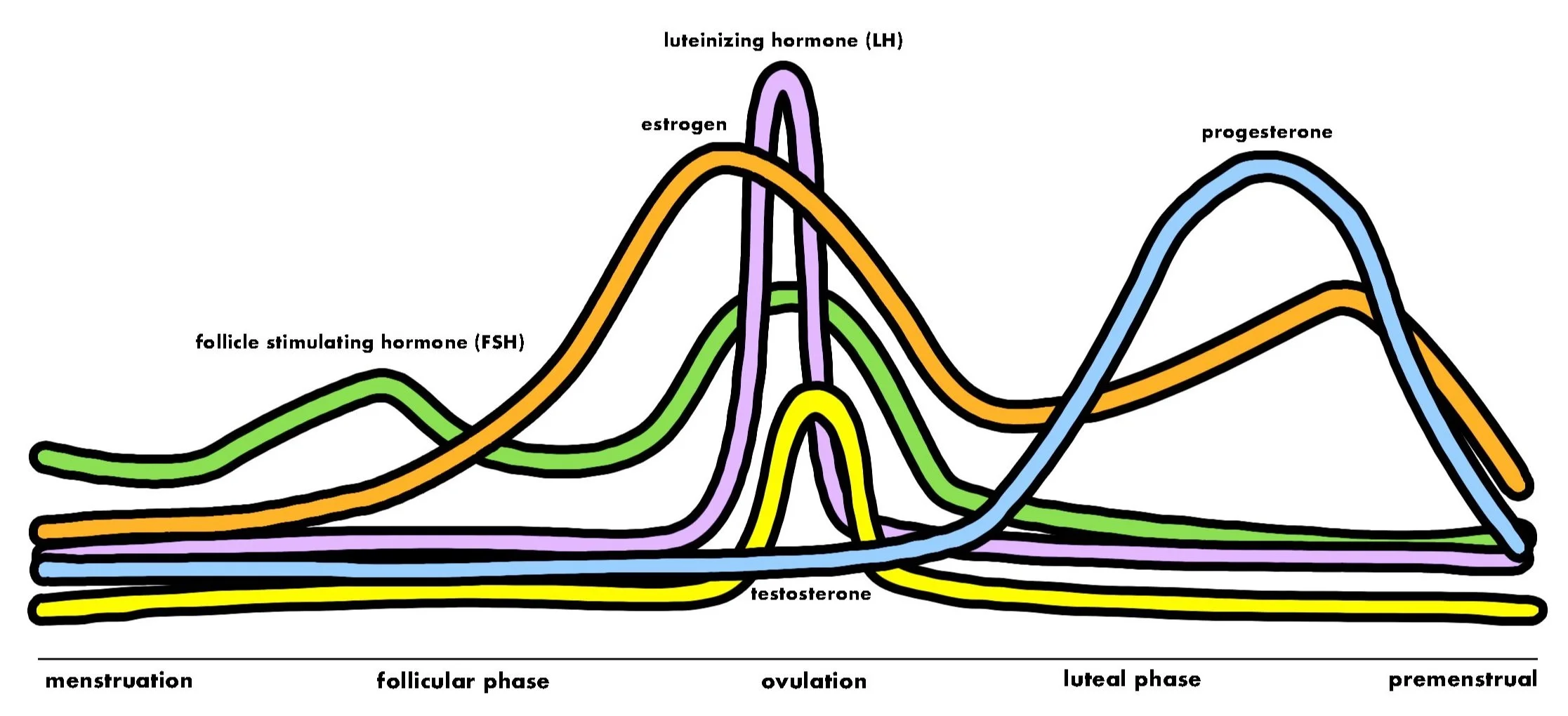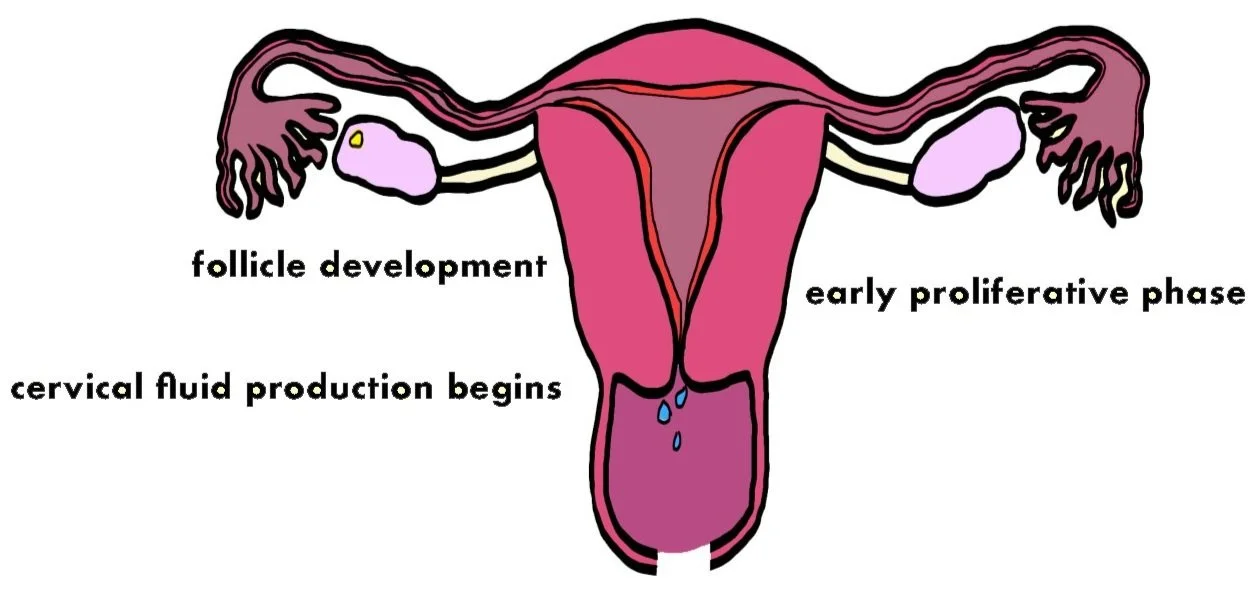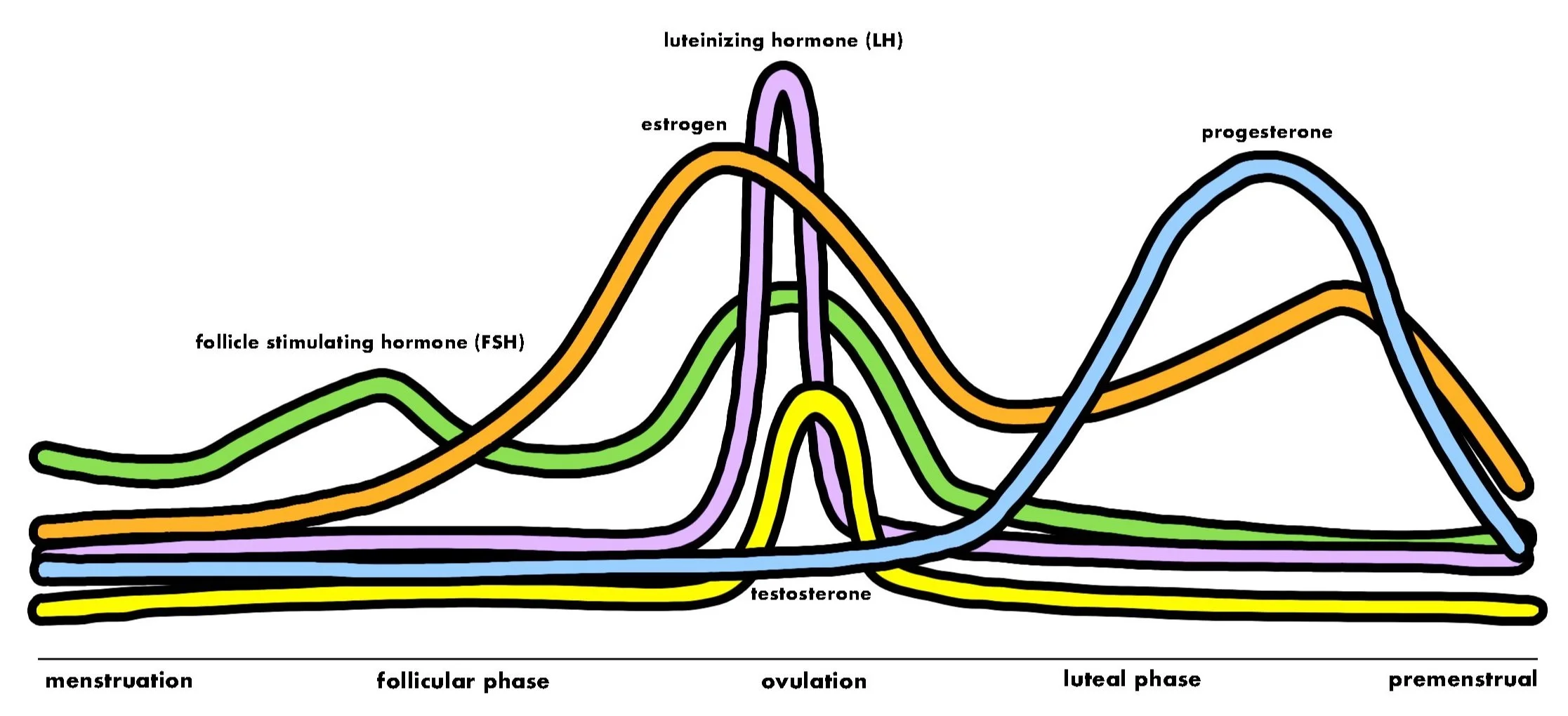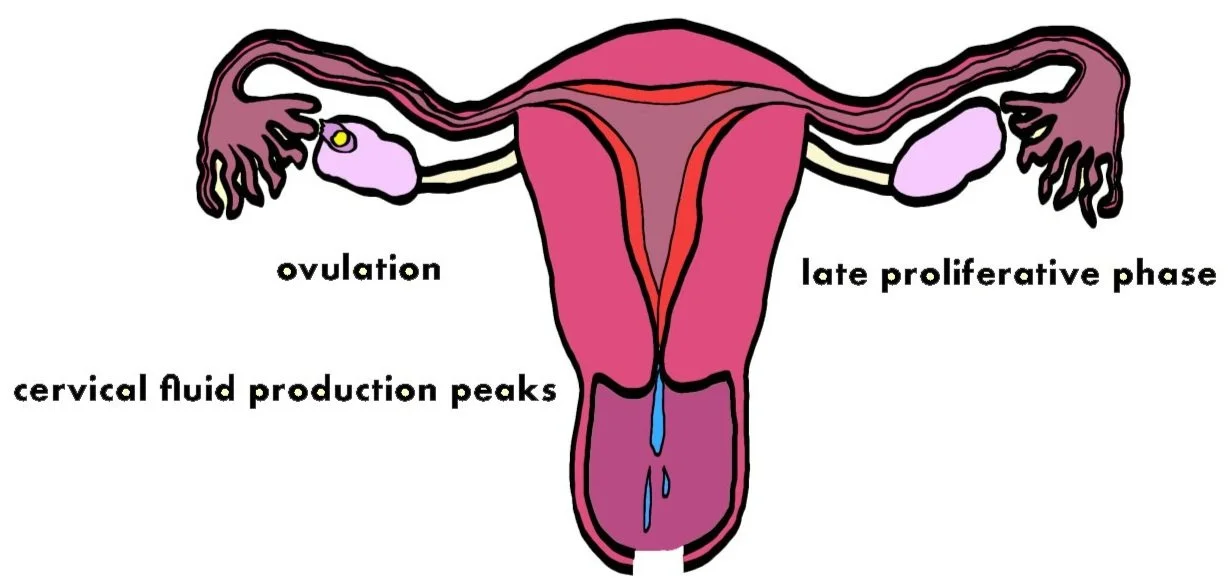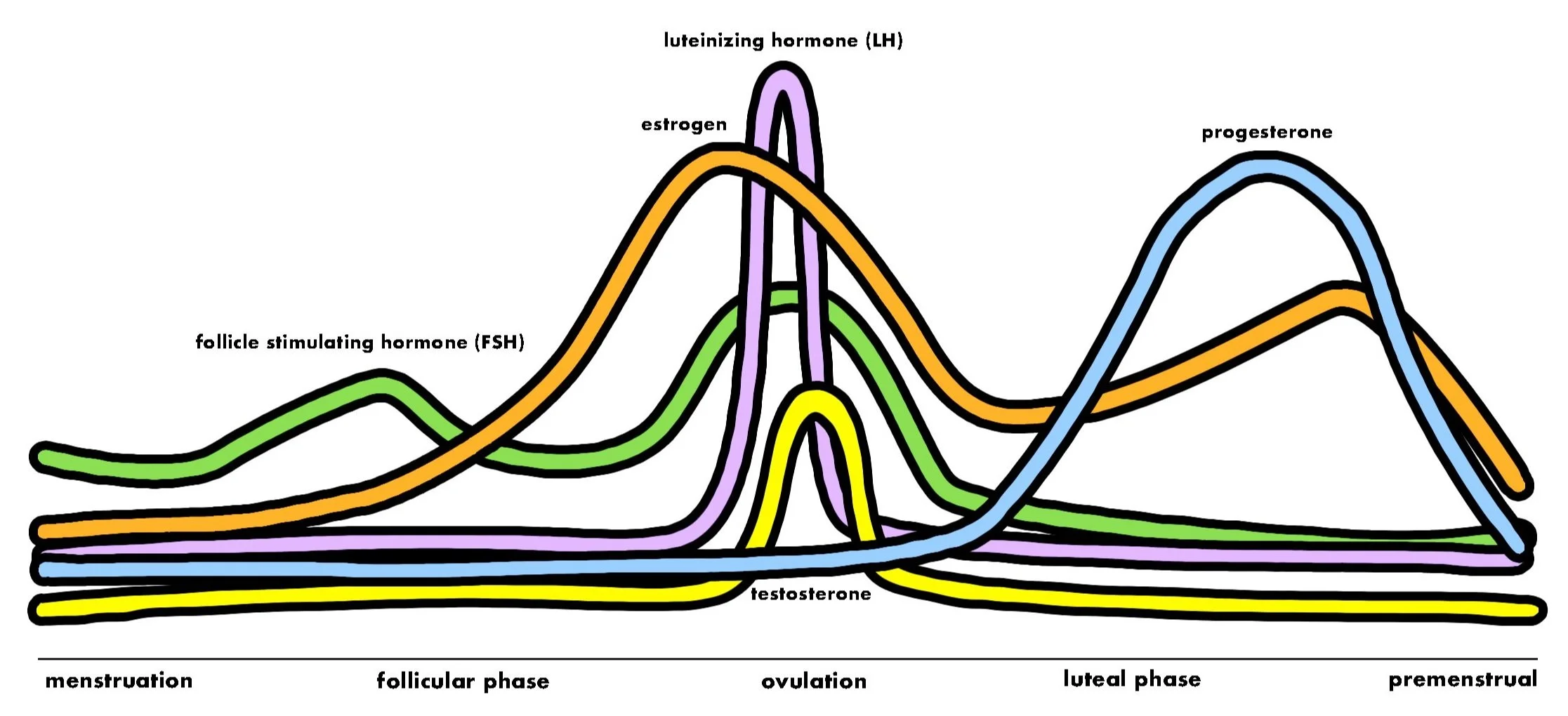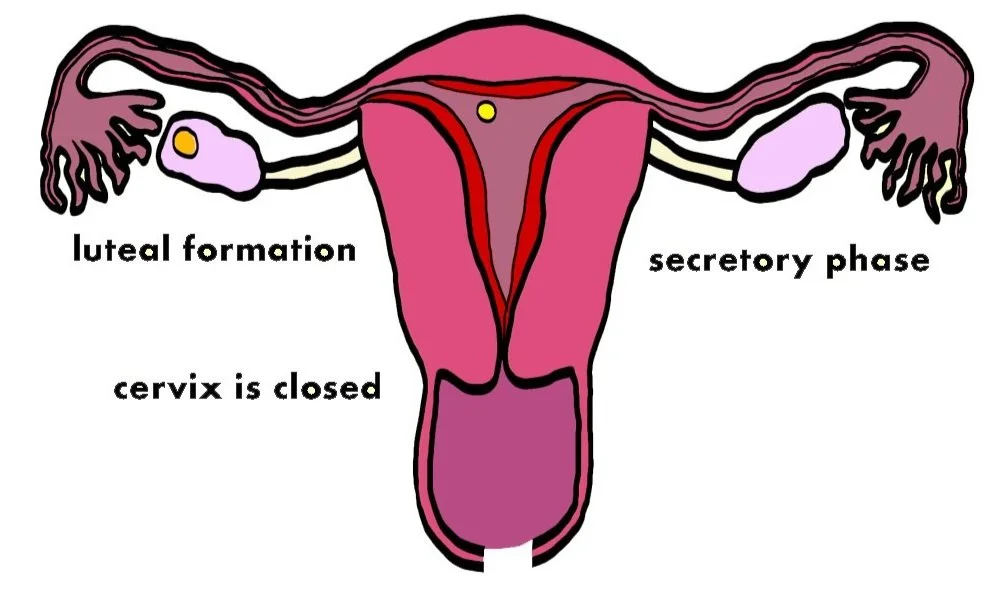The Four Phases Explained
During the menstrual cycle, simultaneous changes occur in the
uterus: endometrium
ovary: ovarian follicle and corpus luteum
cervix: changes in cervical fluid and sensation
Menstrual Phase
the uterus is shedding its lining
blood is exiting through the vaginal opening to the vulva
the cervix is open to let blood flow
estrogen and progesterone are low
Follicular Phase
the uterus begins making new lining, entering the early proliferative phase
ovarian follicles begin developing in the presence of estrogen
cervical fluid production begins developing in the presence of estrogen
the fertility window begins
Ovulatory Phase
the uterine lining continues to thicken in the late proliferative phase
high levels of luteinizing hormone trigger the release of the egg, and ovulation occurs
cervical fluid production peaks from the presence of estrogen and LH
libido may be increased from a peak in testosterone
Luteal Phase
after ovulation, the uterus enters the secretory phase to create the ideal conditions for a fertilized egg
the follicle (egg sac) turns into a temporary endocrine organ called the corpus luteum, which secretes progesterone
the cervix closes with an impenetrable mucus plug, and cervical fluid dries up
<< Return to vaginal health
Next to the ovarian and uterine cycle >>

